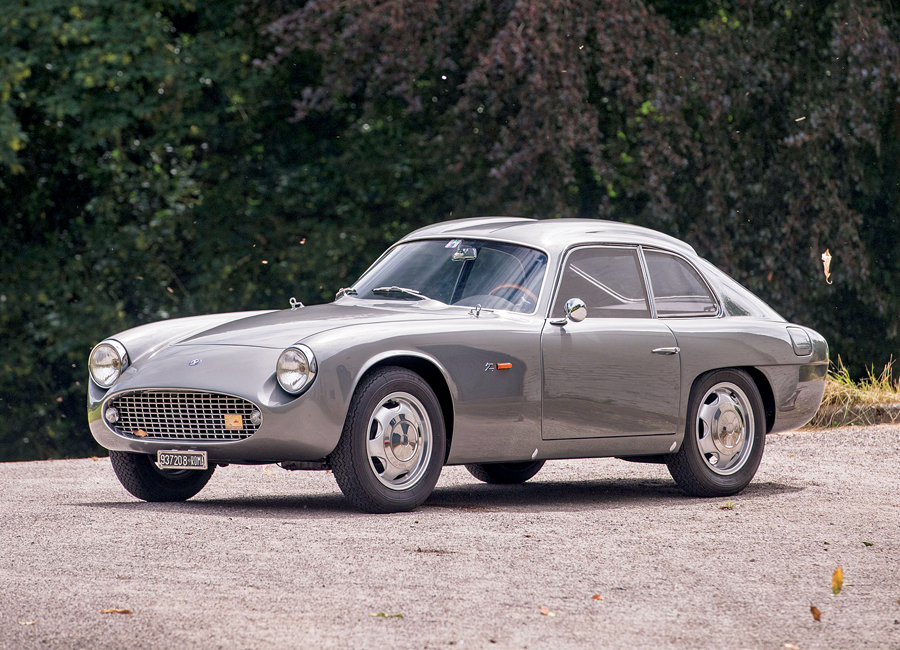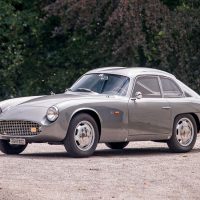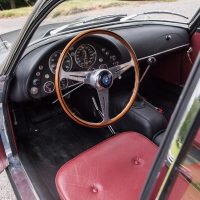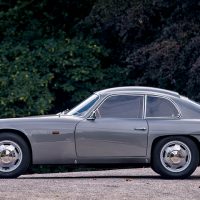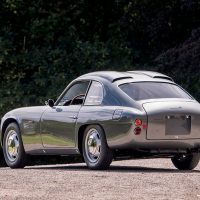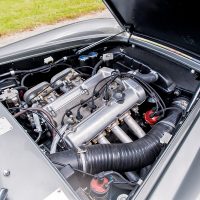The OSCA 1600 GT offered here is the work of Carrozzeria Zagato, and is one of only seven Zagato-bodied cars that were raced; indeed, chassis 011 is probably the most raced of all OSCA 1600 GTs. Its driver was Fausto Mariani, who achieved numerous successes with 011 during the 1964 and 1965 seasons.
SCM Analysis
Detailing
| Vehicle: | 1964 OSCA 1600 GT coupe |
| Years Produced: | 1960–65 |
| Number Produced: | 128 |
| Original List Price: | $7,000 |
| SCM Valuation: | Median to date, $175,000; high sale, $261,172 |
| Tune Up Cost: | $500 |
| Distributor Caps: | $30 |
| Chassis Number Location: | By right front suspension pickup point |
| Engine Number Location: | Right rear of block |
| Club Info: | Osca Zagato Register |
| Website: | http://osca-zagato.com |
| Alternatives: | 1960 Alfa Romeo SZ, 1960 Porsche Abarth, 1960 Lancia Flaminia Zagato |
| Investment Grade: | B |
This car, Lot 9, sold for $328,327, including buyer’s premium, at Bonhams’ Chantilly sale at Chateau de Chantilly, France, on September 3, 2016.
As most of you know, “Etceterini” is a general term that refers to the plethora of small specialty Italian automobile manufacturers that existed right after the second war and into the 1960s. Cisitalia, Nardi, Moretti, Giaur and OSCA are among the names; between all of them they didn’t build as many cars in 20 years as Fiat builds in a month. Most of them used Fiat running gear in hand-built chassis and bodies and, in keeping with the Italian economy and demographics of the time, were tiny little things, seldom larger than 1,100 cc.
Of these, OSCA was clearly the premier marque for a number of reasons. First, it was the company that the Maserati brothers formed after the war to carry on the family obsession with fine racing cars. Second, it was the only completely integrated manufacturer of the bunch: like Ferrari or the corporately owned Maserati, they designed and built all components for their cars, including engines and drivetrains. And third, though racing was the basic motivation of virtually all Etceterini, OSCA actually had international standing and success at it. Only Abarth came close to OSCA’s success.
Brothers Maserati
In the beginning, there were four Maserati brothers heavily involved in car-making: Ettore, Bindo, Ernesto and Alfieri, and all but Ettore worked for the Diatto company, building a 2-liter Grand Prix car. In 1926, Diatto decided to quit racing, so the four brothers formed the Maserati company to build and sell racing cars.
The Maserati brothers had no interest in road machines; it was strictly racing that motivated them. Although all four were heavily involved, Alfieri was the undisputed dominant personality — the best driver, the best engineer, the real entrepreneur who made it all work. Unfortunately, after a racing accident, a surgery went bad and he died in 1932, leaving the three remaining brothers to carry on.
The mid-1930s were a tough time for any company — much less a dedicated racing car manufacturer — and the brothers were engineers, not businessmen. In 1937, the brothers sold the company to the Orsi consortium, a wealthy and successful conglomerate. They all signed a 10-year agreement and stayed with Maserati as engineers. In 1947 their contracts were up, and Maserati was moving towards being a sporting-road-car builder, so the brothers left and formed a new company — OSCA — to return to their original racing passion.
From the track to the road
An amazing thing about OSCA is that although it was a tiny company — until the 1600 GT they never built more than maybe 30 cars in any year — they designed and built their own engines, transmissions and running gear.
Their first engines used a Fiat block with OSCA head, but Ernesto quickly set to designing an all-aluminum twin-cam 4-cylinder engine that became the standard design for all future OSCAs. The variations on the four went from 750 cc to 1,600 cc, and they made it a six for the 2,000-cc version. It was an amazingly successful design and powered OSCAs to racing prominence for roughly 15 years.
In the late 1950s, Fiat came calling. They were designing a new sports car based on their 1200 sedan and wanted an Alfa Romeo-type engine for the upmarket 1500 variant. Rather than develop and build a Fiat twin cam, buying it from OSCA made a lot of sense, so OSCA found itself in the business of supplying engines.
Along with the Fiat contract came a substantial and secure cash flow, so the brothers decided to try something they had always avoided — building a sporting road car for the gentleman driver who might want to race it occasionally.
The sports racer
The new 1600 GT was more of an evolution of earlier designs than a departure. The chassis design remained a tubular-ladder approach, rear suspension could be either live axle or IRS at the customer’s option, and the engine and drivetrain were standard OSCA, with a 4-speed synchronized transmission.
In keeping with OSCA tradition, the car was almost tiny — 13 feet long on a seven-foot, four-inch wheelbase and 50 inches tall — so fitting into it was a challenge for larger drivers. The bodywork was farmed out to various carrozzeria, but Zagato made the majority of them. Depending on your intended use and pocketbook, the engine was available in various states of tune, ranging from 95 hp to a twin-sparkplug screamer making 140 hp.
The car was announced in 1960, but various problems with racing homologation delayed delivery. That delay is a pity, because in the end, only a few of them actually raced, and those without notable success.
The total production of 128 cars was large for OSCA, but miniscule by normal standards. Combined with a marque name little known outside of racing circles and no spectacular competition success, this made the OSCA 1600 GT an obscure niche-market car both then and today.
A challenging sale
Most all of us have figured out by now that the speculative bull market for collector cars ended between two and three years ago. The current market remains strong and is absorbing lots of cars, but the days of buying something weird but cool and assuming that an inflating market will cover any questionable decisions are well past us.
This poses problems for cars like this one; few people understand them and obscurity becomes an issue when most serious buyers have wish lists from which they are working.
Without an enthusiastic “dentist from Tulsa” to run up the bidding, the bidder pool on a car like this is reduced to a few highly knowledgeable cognoscenti who know exactly what they are buying and why, which makes for a difficult sale.
In fact, this car failed to sell on the hammer and was purchased post-block, which suggests a single real buyer and a somewhat disappointed seller. The Internet shows that this car sold privately a few years back for about $345,000, so the seller took a hit as the hot market cooled. Hopefully, he enjoyed the car in the meantime.
In today’s world and market, I don’t think our sale price is a bad result for an obscure exotic bought at the top. Call it fairly bought and sold. ♦
(Introductory description courtesy of Bonhams.)
